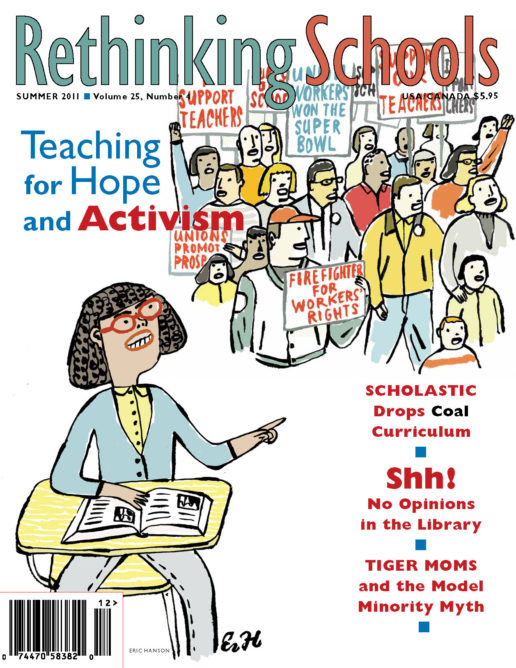What’s in a Name?
The Name Jar
By Yangsook Choi
(Random House Children’s Books, 2003)

I teach in an ethnically, culturally, religiously, and linguistically diverse public school district, so it’s important to me to encourage children from the very first day of school to take pride in who they are and to embrace their differences. Every year, I begin building community in my elementary school classroom with a book from my personal collection of read-alouds, The Name Jar, by Yangsook Choi. In this colorful picture book, a young Korean girl struggles to fit in with her peers at her new school, but she finds herself embarrassed by her name: Unhei.
As the story begins, Unhei is on the school bus. Almost immediately, the other children begin teasing her because of her difficult-to-pronounce and unusually spelled name. Nervous about how her new classmates will treat her, Unhei introduces herself by telling them that she does not have a name yet, but she will choose one by the following Monday. Although a bit confused, the students eagerly offer to help by listing names and collecting them in a glass jar—the name jar. Unhei is hopeful that finally she will have an “American” name, one that kids will be able to say and spell, one that will make her more like everyone else.
As the story unfolds, Unhei learns the significance of her name from her mother and the friendly Korean grocer in her neighborhood. Her name, which means “graceful” in Korean, was chosen for her by a name master sought out by her mother and grandmother. The grocer says that the name Unhei perfectly describes who she is: a young, graceful, and polite girl. Unhei realizes that her name is too special to give up. On Monday morning, she proudly introduces herself as Unhei. She writes her name in English and in Korean on the board as she confidently teaches her class how to pronounce it. She is not a Daisy, Madison, Amanda, or Laura. She is Unhei.
Reading The Name Jar has encouraged my students to share stories about the origins of their own names. It has helped me create an environment that feels safe for them to share information about their cultures, the people in their families, and the languages they speak at home. Given an opening, children have a natural desire to share their lives with others and to learn about others’ lives. I have read this book in both 3rd-grade and 1st-grade classrooms; each time, my students and I find ourselves immersed in a rich learning experience.
I first received this book as a gift from a Korean American friend. With the book she gave me a rubber stamp with my name, Kathy, in Korean characters. As a closing for the activity, I tell this story, bring out the stamp, and offer to stamp each child’s hand as a reminder that all our names are filled with meaning and were given to us with love.

